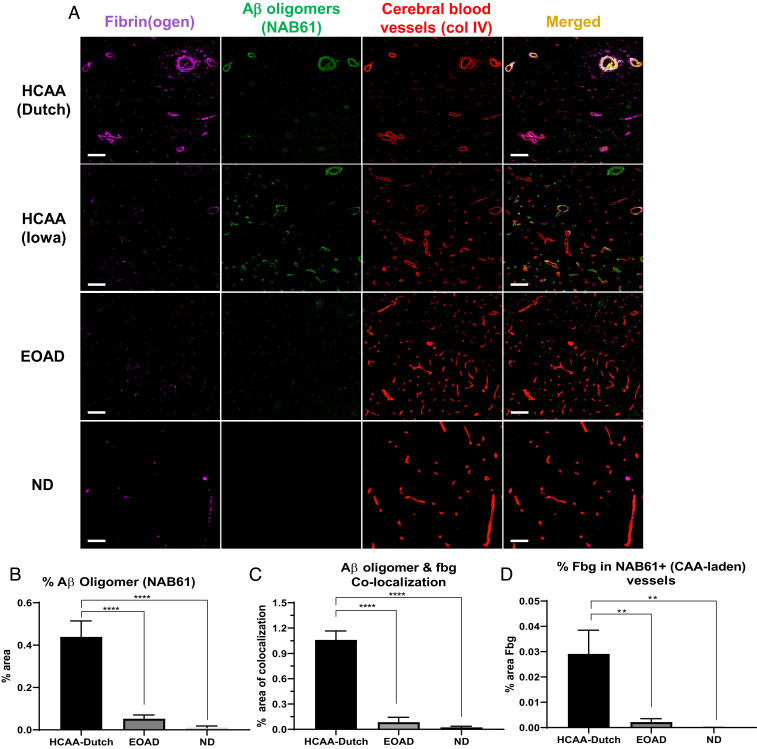Fig. 5.
Increased cerebrovascular Aβ oligomer and fibrin(ogen) codeposition in HCAA patients’ cortical blood vessels. Representative 20× images of brain sections were probed for fibrin(ogen) (fbg, magenta), Aβ oligomers (NAB61, green), and blood vessels (col IV, red). (A) Brain sections from HCAA-Dutch (n = 5) and -Iowa (n = 1) patients show extensive Aβ oligomer deposits abundantly colocalizing (merged, yellow) with intra- and extravascular fibrin(ogen) along cerebral blood vessel walls, most probably at sites of CAA pathology. The EOAD group demonstrated sparse NAB61 signal or Aβ oligomer deposits at sites of apparent parenchymal plaques. (B) Quantification of percent area of NAB61 signal reveals significantly elevated levels of Aβ oligomer deposition, in HCAA-Dutch brain compared to EOAD (n = 5) and ND (n = 5) brains. (C and D) Colocalization analysis of the same tissue sections using confocal microscopy reveals dramatic colocalization between Aβ oligomers and intra- and extravascular fibrin(ogen) in HCAA-Dutch brains compared to the EOAD and ND groups, which was particularly prominent along cerebral vessel walls. There was almost no colocalization between fibrin(ogen) and Aβ oligomers at sites of parenchymal plaques throughout the three patient groups. Due to the limited amount of HCAA-Iowa (n = 1) individuals available in our study, it was not included in our IF quantification analysis. Statistical analyses were performed using one-way ANOVA followed by Tukey’s post hoc test. ****P < 0.0001; **P < 0.01. (Scale bars: 100 µm.)

